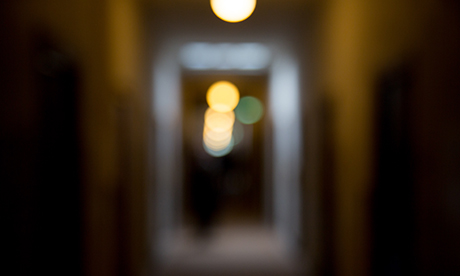Carrie Rowell still misses the 7 a.m. phone calls from her father, who died six years ago.
He would use her nickname, “Toots,” or ask, “Hey, babe, how’s your morning going?”
“I would give anything to hear that again,” Rowell said.
But interacting with a version of a departed loved one is now more accessible than ever, thanks to generative language models such as ChatGPT.
Trained on a deceased relative’s words — from a digital journal, videos or other content — a chatbot can reply to a prompt or question from a survivor with what it predicts the relative would say.
This might sound like the episode of the science-fiction series “Black Mirror” that explored a woman’s use of technology to create a virtual version of her dead boyfriend, with disturbing implications.
But this is the very real way technology is helping people deal — or maybe not deal — with death.
Funeral homes are already adding AI powered obituary-writing services to the digital memorial webpages they create.
An interactive app, HereAfter AI, lets a user preserve photos and memories for family members to access after the user has died.
The Project December website offers to “simulate the dead” in a text-based conversation with anyone, “including someone who is no longer living.”
In 2020, reality TV star Kim Kardashian even famously received a hologram of her late father wishing her a happy 40th birthday, a gift from her now ex-husband, rapper Kanye West.
Rowell, however, is unlikely to pursue any similar avenues.
“I don’t think it would do me any good,” said Rowell, who teaches the psychology of grief class in the mortuary science program at the University of Minnesota’s medical school. “I think that it would open up a wound that at least has a pretty good cover on it.”
The potential for new technology to intersect with age-old bereavement practices is growing nonetheless.
Rowell and others have advice on what to consider in creating a “chatbot of the dead.”
Remember dignity, respect
Michael LuBrant, director of the U’s mortuary science program, said the impulse to create a way to communicate with the dearly departed is part of human nature.
“There’s no question that the idea of having ways to remember and memorialize and connect is, I think, something that’s wired into our DNA,” LuBrant said.
LuBrant, however, urges caution to families and funeral homes regarding chatbots. One concern is the degree to which survivors or others define the legacy of someone who has died.
“To what extent is any service offering that I would present to a survivor’s next of kin, something that one would argue would demonstrate the highest degree of respect, dignity and concern for that individual who died in honouring their wishes and the wishes of the next of kin?” LuBrant said.
Curtis Funk, CEO of Tukios, a Utah-based software company serving funeral homes in Minnesota and across the country, said they would need roughly a month to complete a chatbot.
Tukios already offers an AI powered obituary writer and a content moderation tool for online guestbooks.
“People would love it, the way they listen to voice mails after someone’s passed away or watch videos just to hear their voice,” Funk said of such a chatbot.
“We’re open-minded to building that into our suite.”
But family members should decide whether to have a chatbot created and collect the content that goes into it.
“I don’t think anything like that should ever be done without the family’s approval,” Funk said. “I think funeral directors all feel the same way.” Continue reading
